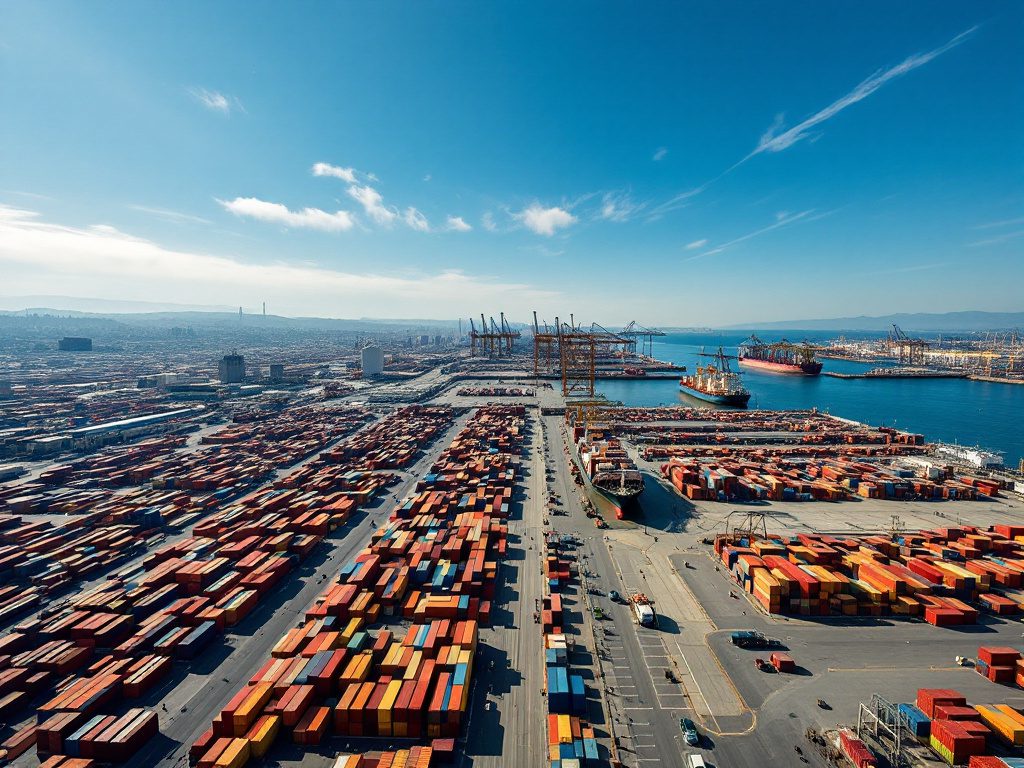Tariffs Strike the Heart of U.S. Trade
Los Angeles, the beating heart of Pacific commerce, awoke this week to news of a staggering 35% nosedive in incoming cargo at its iconic port. The numbers, confirmed by Gene Seroka, Executive Director of the Port of Los Angeles in a CNBC interview, aren’t just lines on a ledger—they represent a seismic jolt to the nation’s supply chain, local jobs, storefronts, and household budgets.
What caused this abrupt slowdown? The culprit is clear: The Trump Administration’s latest round of steep tariffs, dubbed a ‘Liberation Day’ policy package, levied duties as high as 145% on many Chinese goods—a sledgehammer to established shipping lanes and multinational sourcing strategies. With China accounting for roughly 45% of the port’s traffic, even a minor disruption sends ripples across the Pacific. Yet this time, the effect is more like a tsunami.
Major U.S. retailers—Walmart, Target, Best Buy, and countless others—have halted orders from China, forced to contend with uncertain costs and, in some cases, outright unavailability of goods. The two massive entry points, the ports of Los Angeles and neighboring Long Beach, now serve as case studies in how quickly global trade can grind to a halt. Twenty canceled sailings for May alone represent nearly a quarter of Los Angeles’ usual ship arrivals, according to the National Retail Federation (NRF). In their words, “this marks the abrupt end to 19 straight months of import growth.”
The Domino Effect: Empty Shelves, Rising Prices, Shaky Jobs
On its face, fewer cargo ships might conjure images of less port congestion or cleaner skies. The reality, of course, is far grimmer. Supply shocks of this magnitude penetrate deep into American households, particularly those already struggling with stagnating wages and higher living costs. A closer look reveals that the fallout extends beyond the docks—through warehouses, transportation networks, Main Street stores, and into consumers’ pantries.
With retailers’ inventories down to five to seven weeks of supplies, shoppers face the double whammy of diminished choices and sticker shock as businesses scramble to pass on the tariff-induced price hikes or are left with empty shelves. Gene Seroka’s blunt assessment is hard to ignore: “The pain is being felt on both sides of the Pacific.”
“Nobody wins in a trade war that’s waged by megaphone and tweet. It’s retailers, workers, and everyday families who wind up footing the bill.”
Economist Mary Lovely, a senior fellow at the Peterson Institute for International Economics, notes, “When you squeeze a supply chain, it’s not only the goods but the livelihoods of warehouse workers, truckers, and dockhands at risk.” By the National Retail Federation’s conservative forecast, May’s container traffic will plunge over 20%, and June will dip to the lowest levels seen since winter 2023.
Beyond that, cancelled shipments ripple outward: local trucking and rail operators lose work, regional manufacturers see critical parts delayed, and small retail businesses with thinner margins hang by a thread. As for the international stage, “reshoring” supply lines overnight remains a fantasy—a reality underscored by ongoing bottlenecks at alternate Asian ports and diminished logistics capacity worldwide.
History Repeats: The Real Costs of Protectionism
Those who have grown up with shelves brimming with affordable imported goods might wonder if trade wars are something new. Yet American history tells a sobering tale. Echoes of the 1930 Smoot-Hawley Tariff, which deepened the Great Depression, haunt the current administration’s policy playbook. Short-term political gain came at the expense of lasting national pain then; the same pattern appears today.
Disentangling the world’s most complex supply chains overnight is not only impossible but perilous for our collective economic well-being. According to Harvard economist Kenneth Rogoff, “Attempts to strong-arm supply chains with sudden tariffs create vast inefficiencies,” leading not to onshored jobs, but to job losses and higher costs domestically.
Instead of embracing global interdependence responsibly, the tariff policies have forced retailers to scramble for alternative suppliers, often in Southeast Asian nations, only to encounter the same infrastructure constraints and rising shipping costs. Merchants and industrial buyers are learning the hard way that trade policy by fiat rarely produces the desired results.
The Port of Los Angeles, long an engine of West Coast prosperity and middle-class jobs, now stands as an object lesson: the human and economic costs of protectionism are felt not only in quarterly growth statistics but in paychecks, bank accounts, and local neighborhoods.
Progressive advocates and policy researchers urge a different path. “Deliberate, multilateral engagement—investing in domestic innovation and fair trade enforcement without indiscriminate tariffs—yields better results for workers, the environment, and our allies,” says AFL-CIO policy director Celeste Drake.
Gene Seroka himself summed up the dilemma in stark terms: effective trade policy isn’t a zero-sum contest. If history teaches us anything, it’s that strategic cooperation and shared prosperity should trump isolationist quick fixes—for Los Angeles, for American families, and for the global community.

